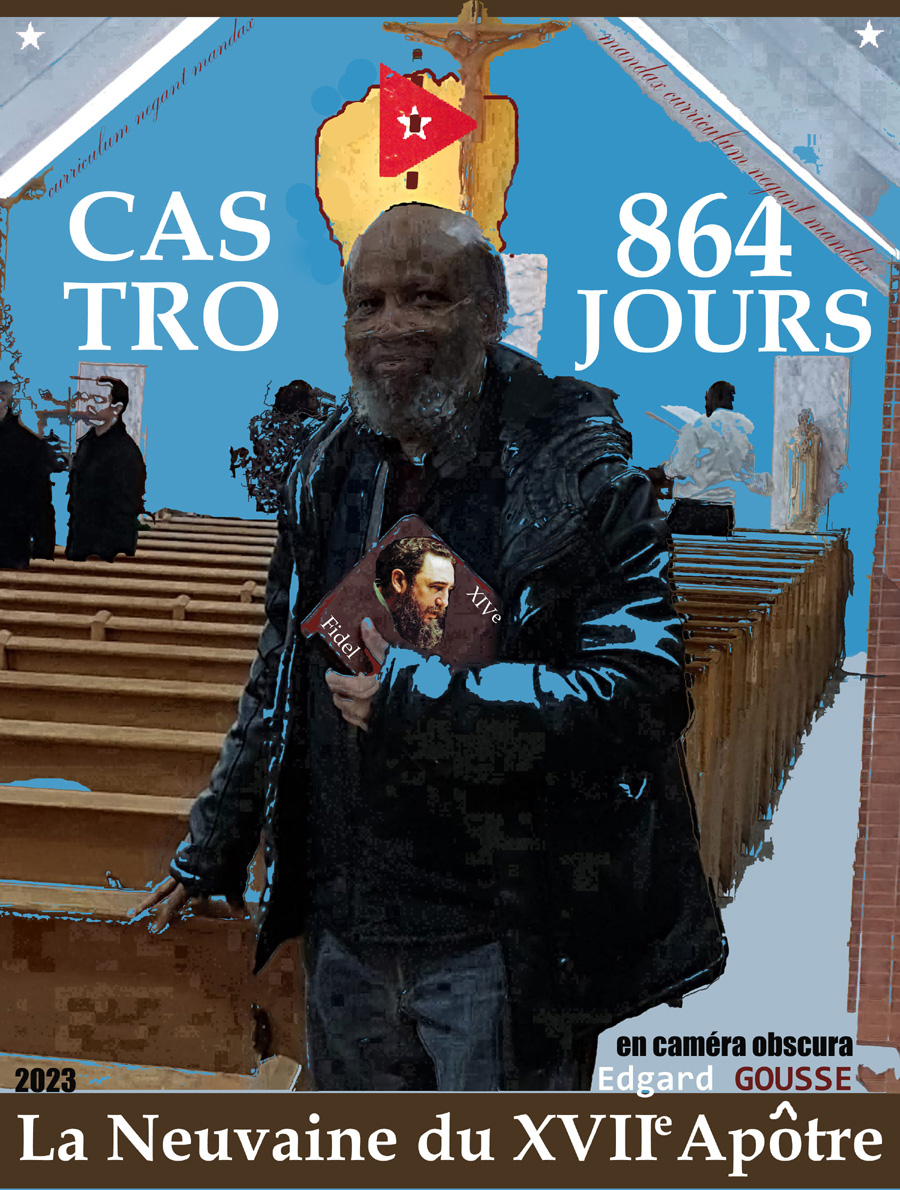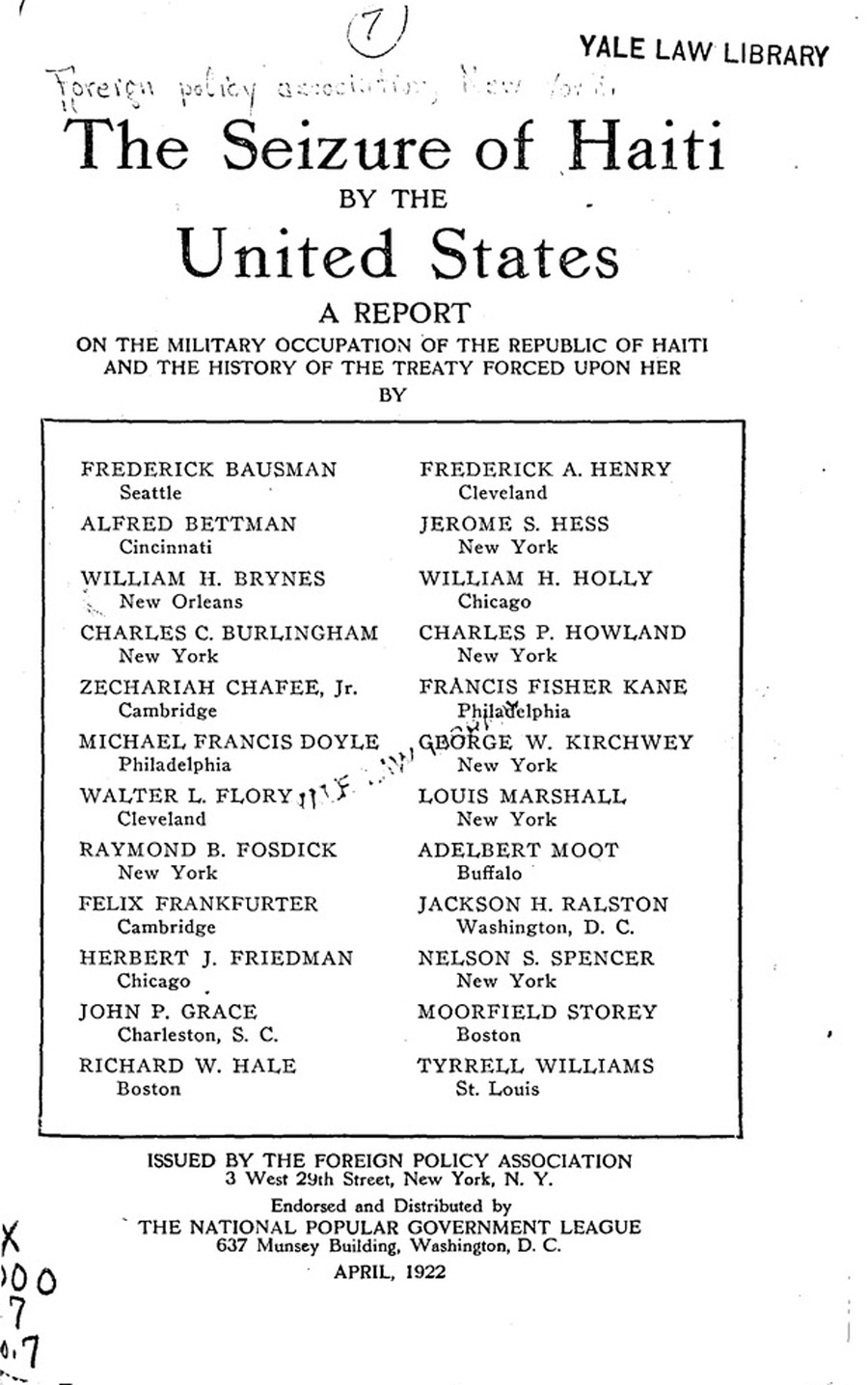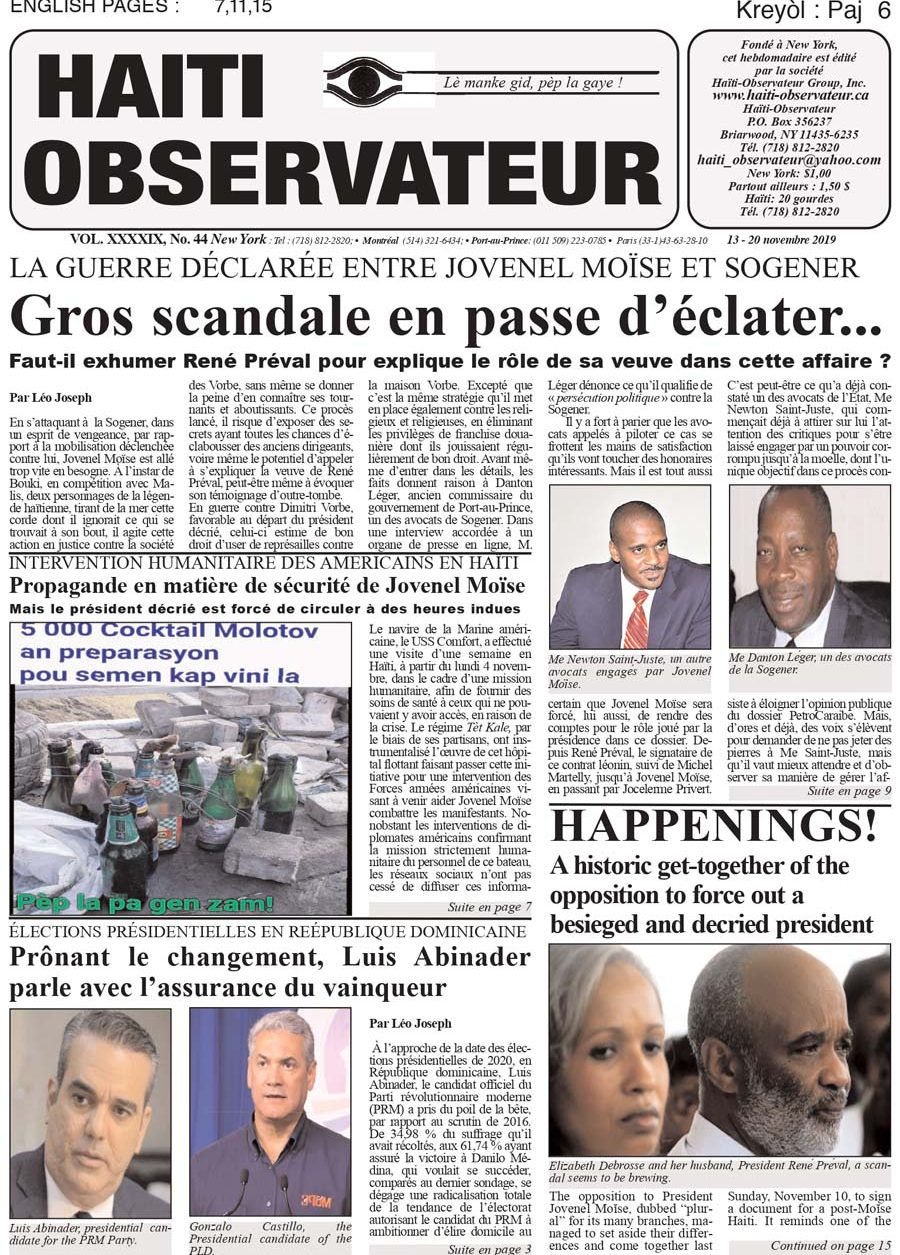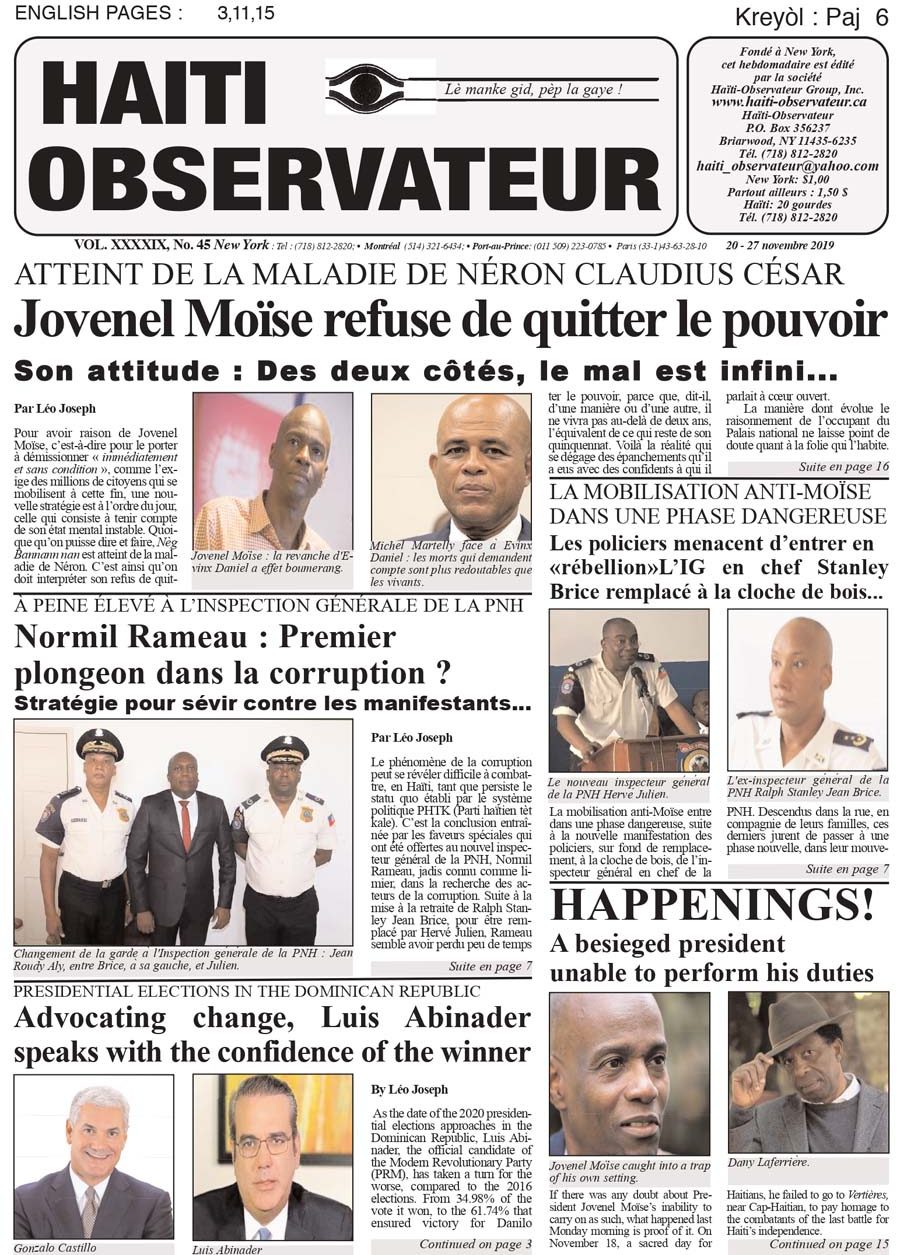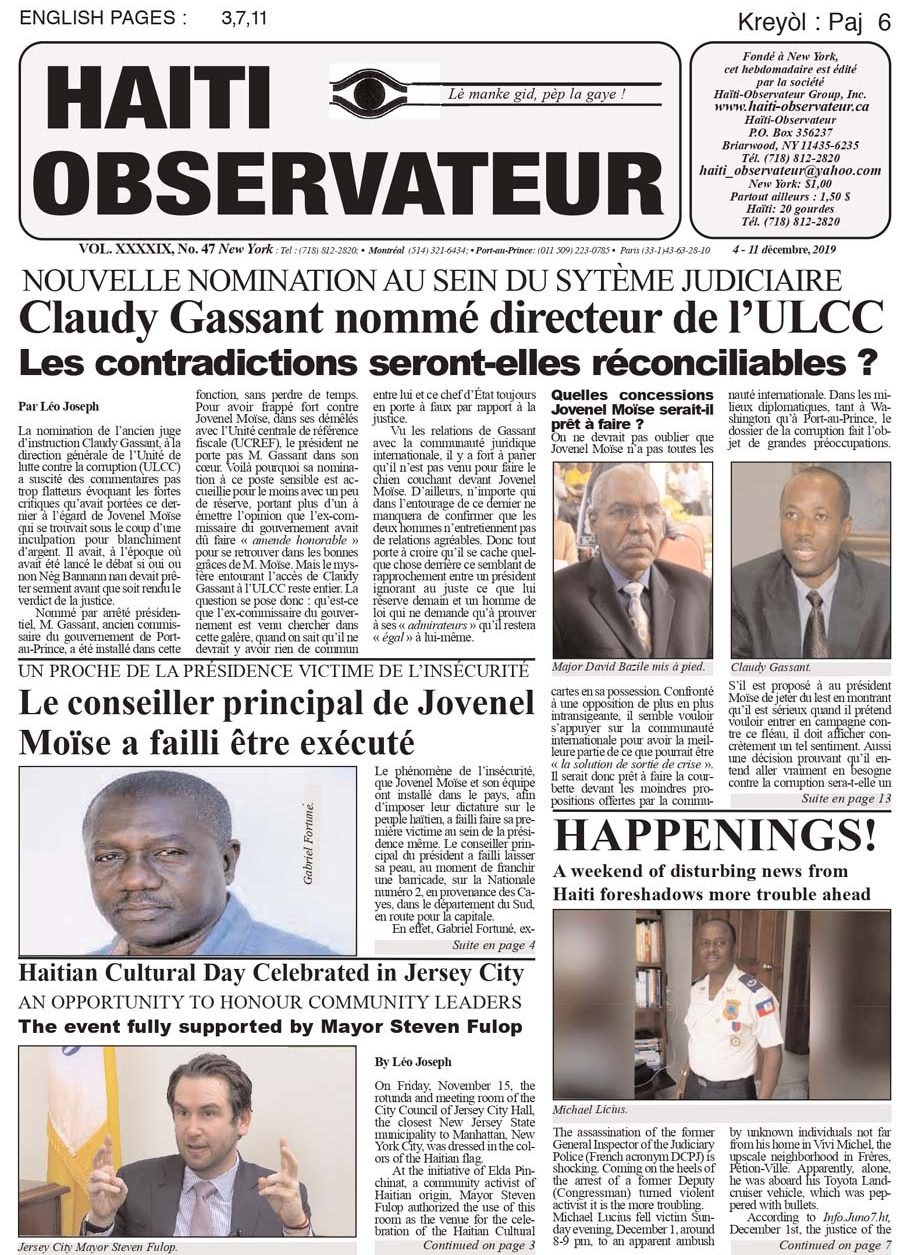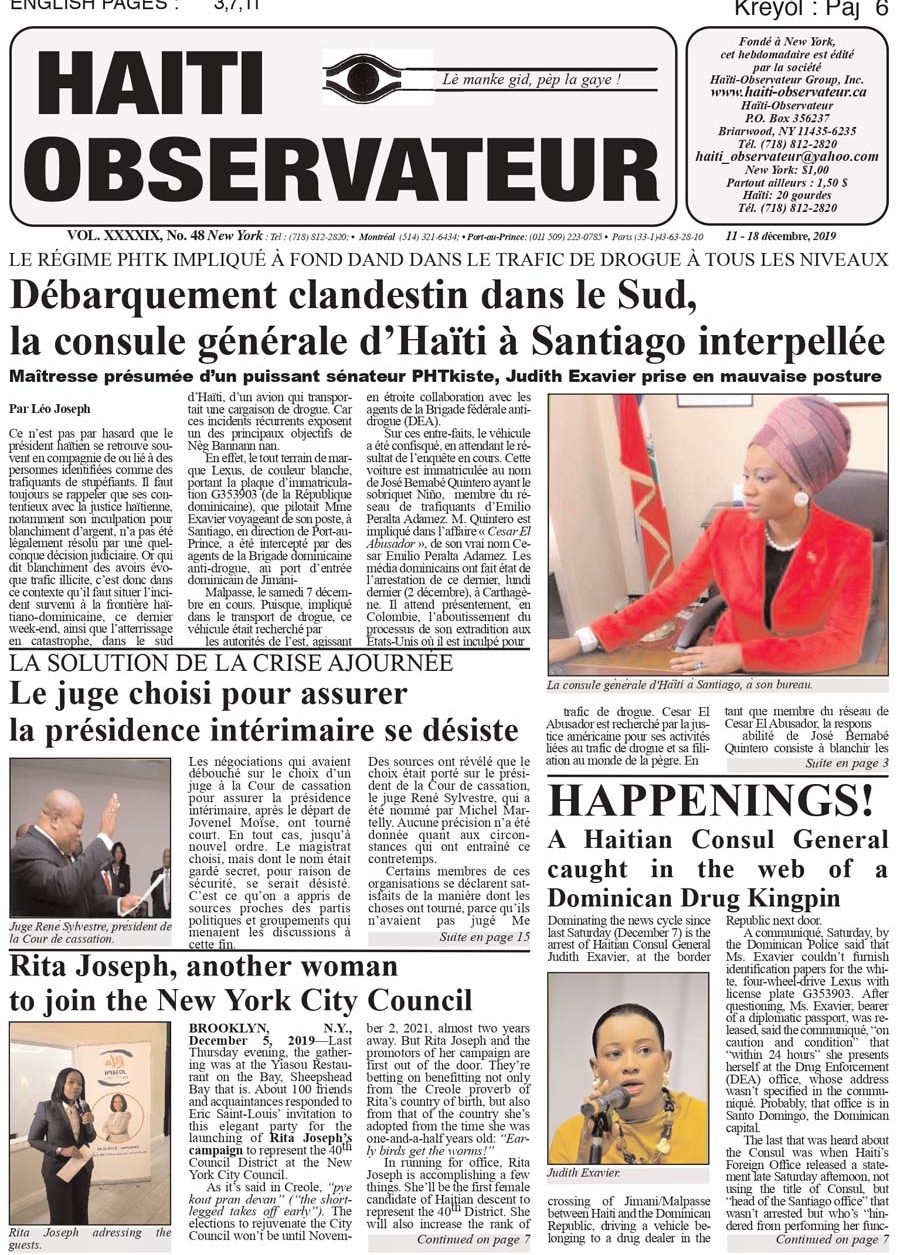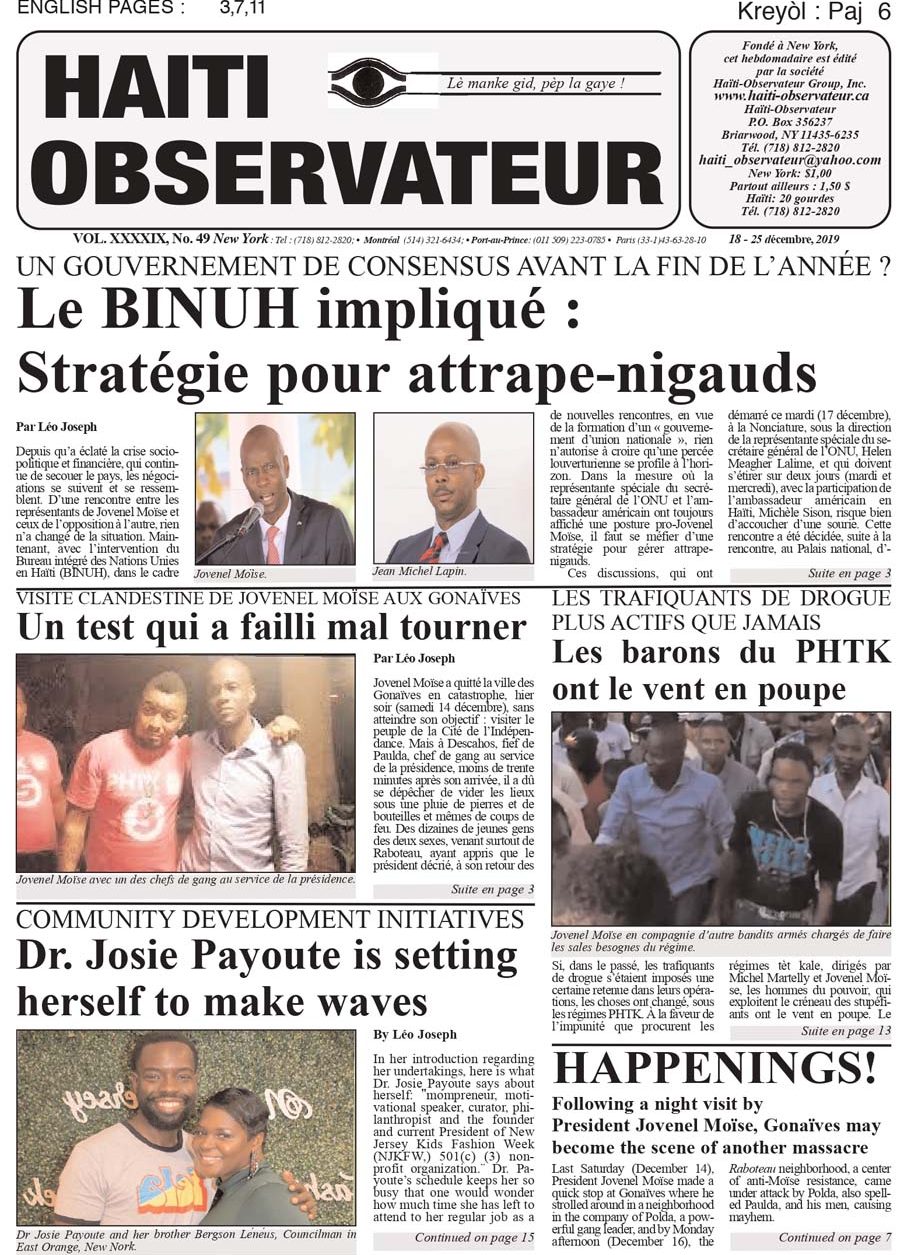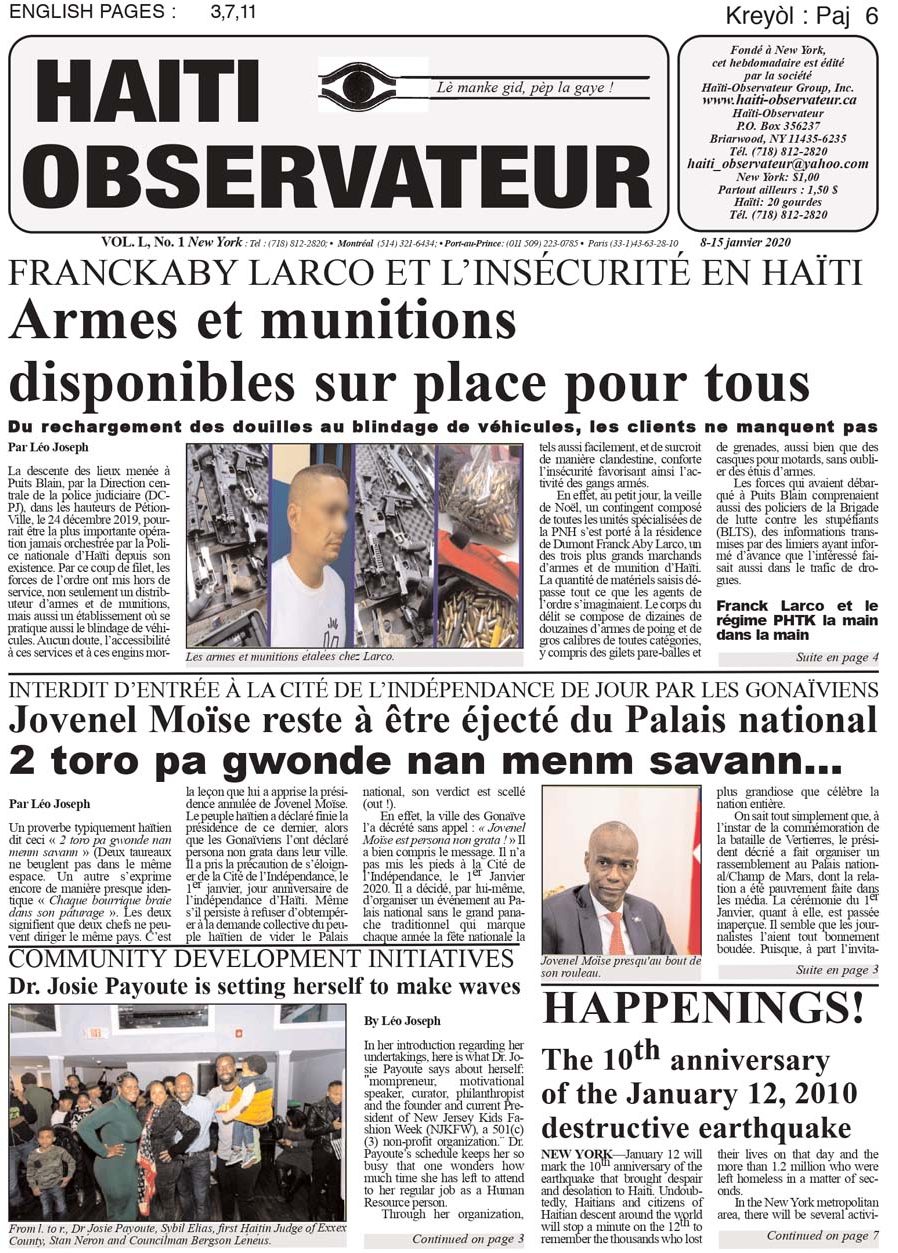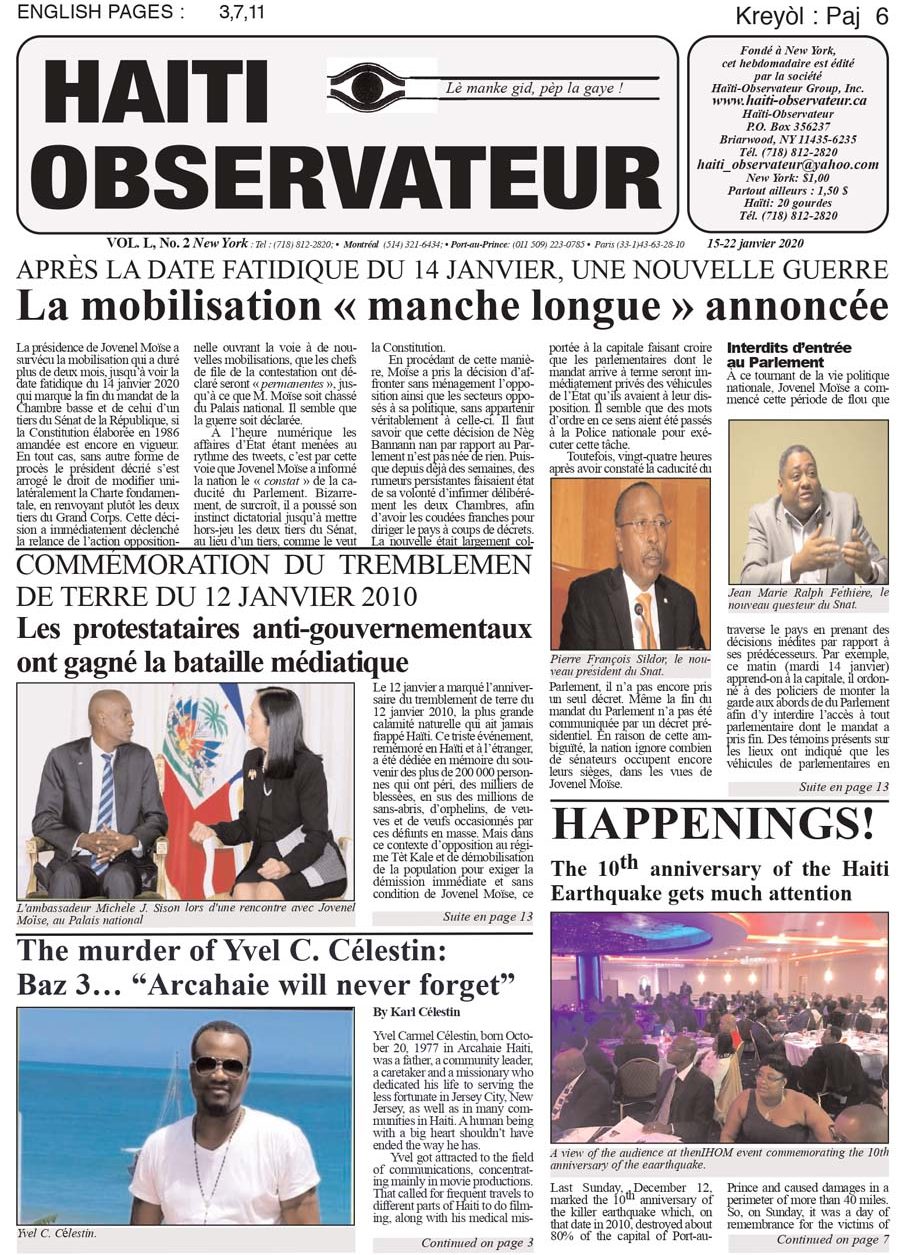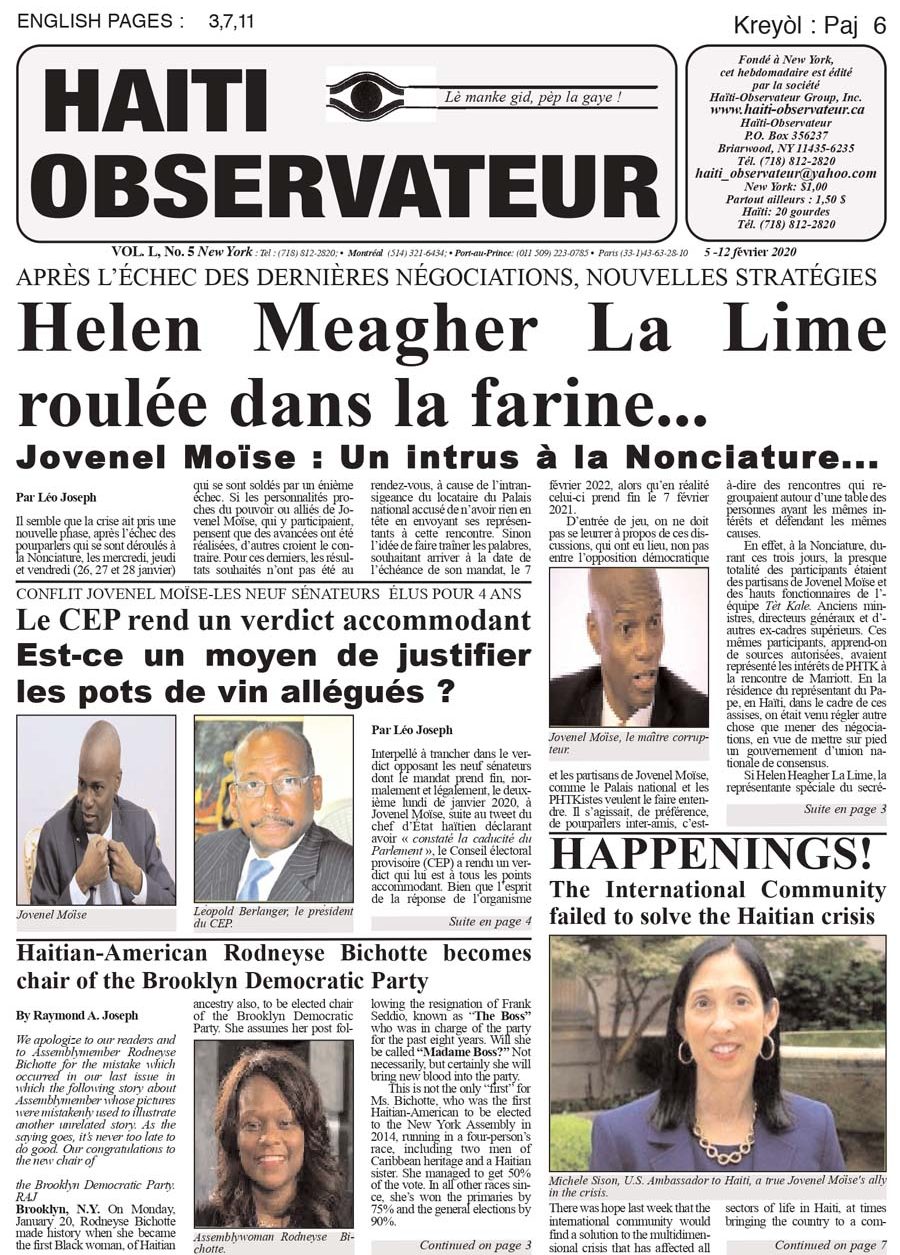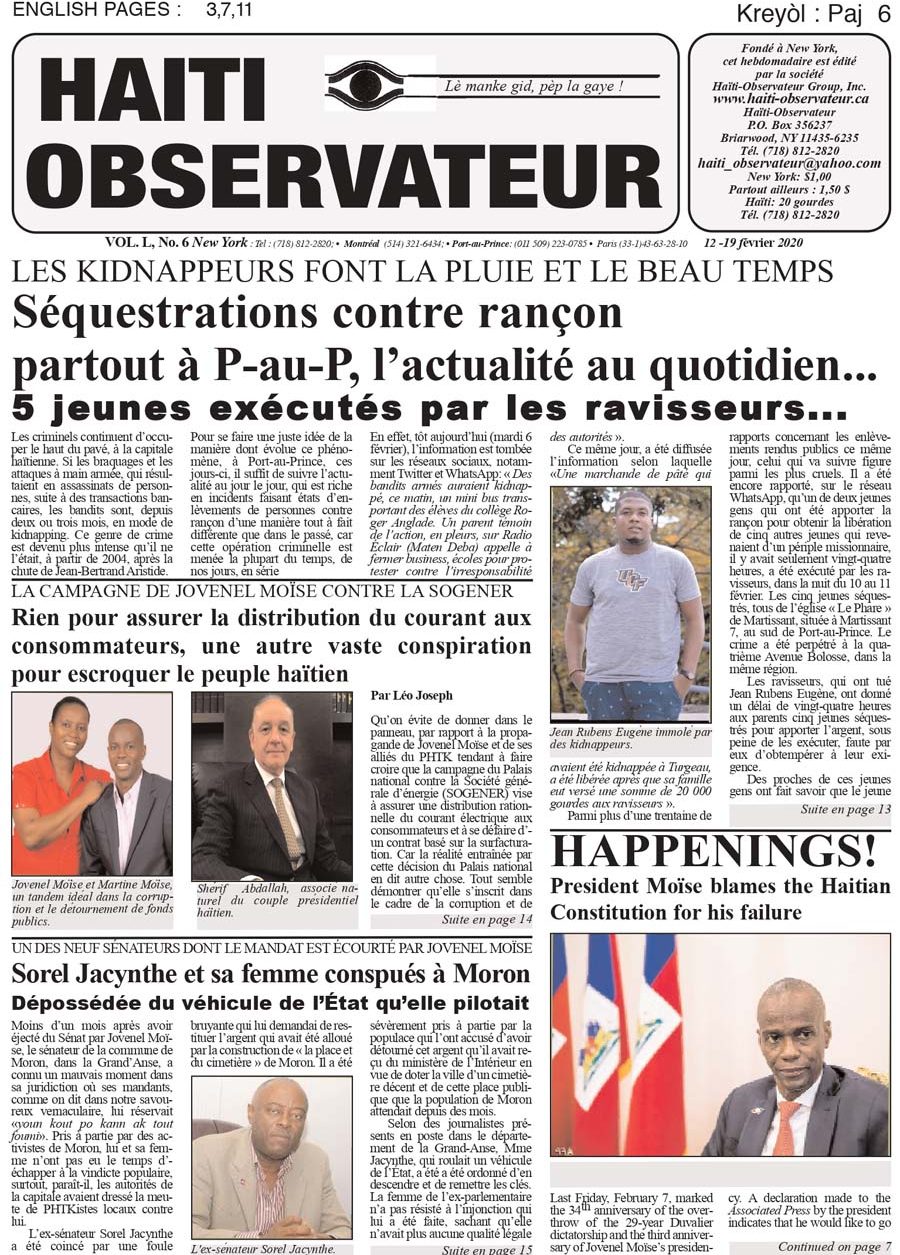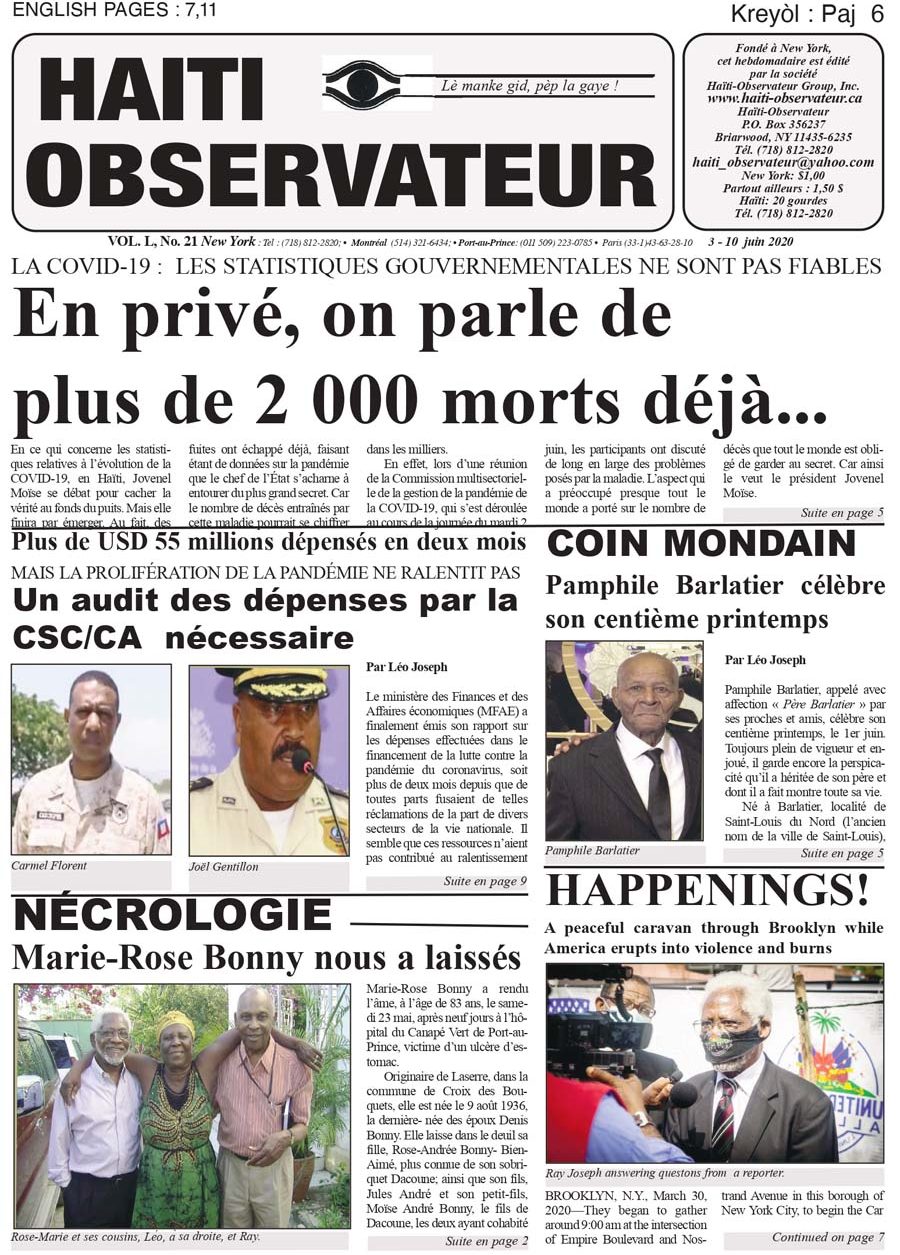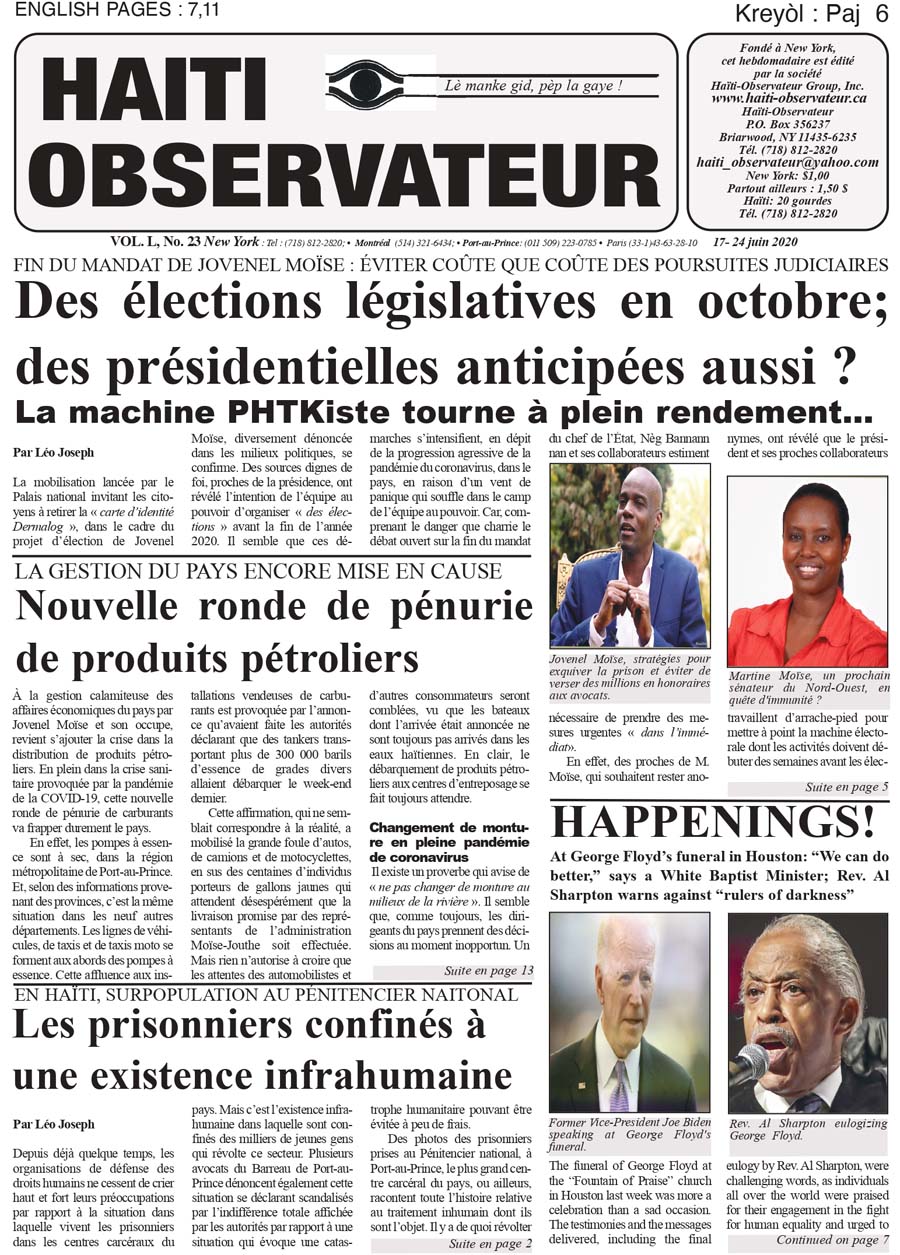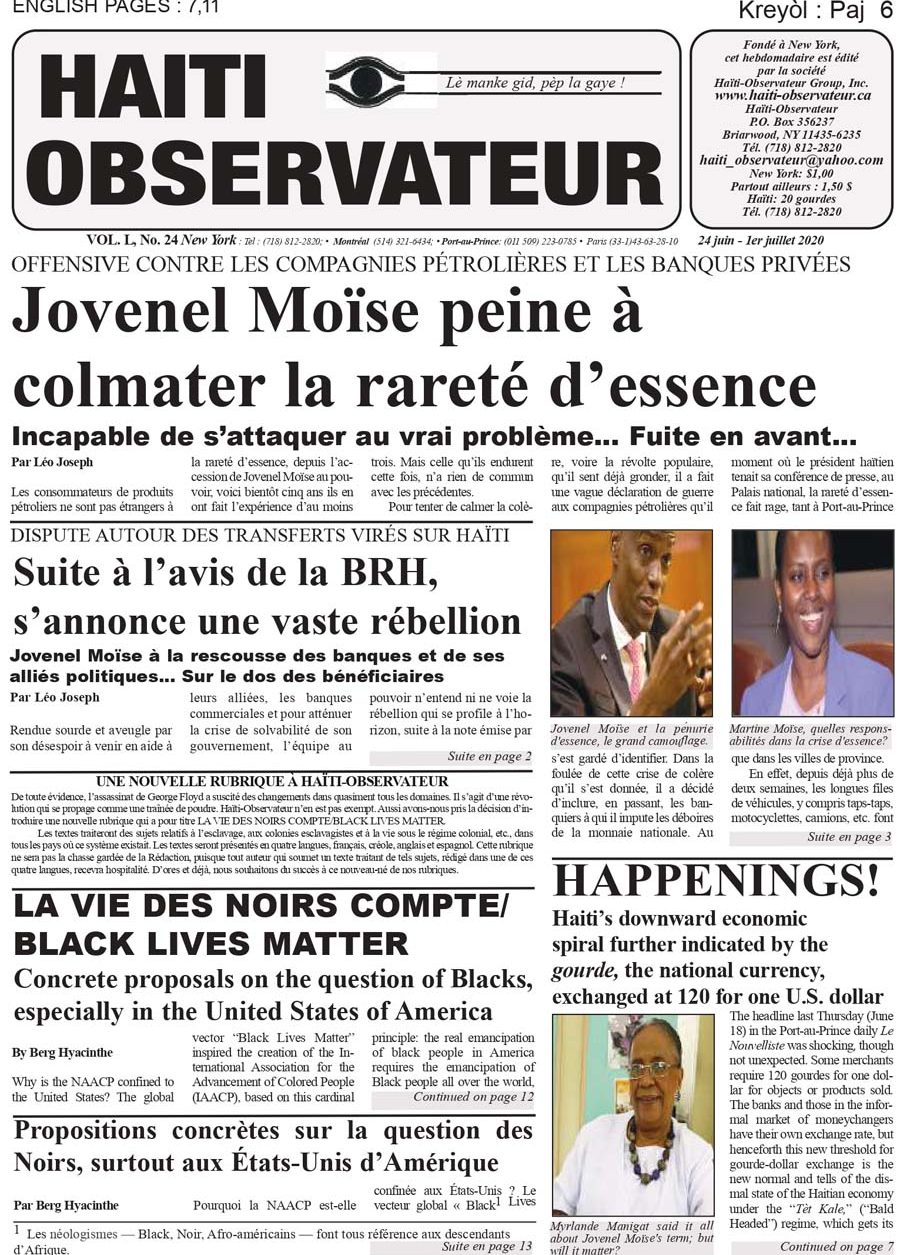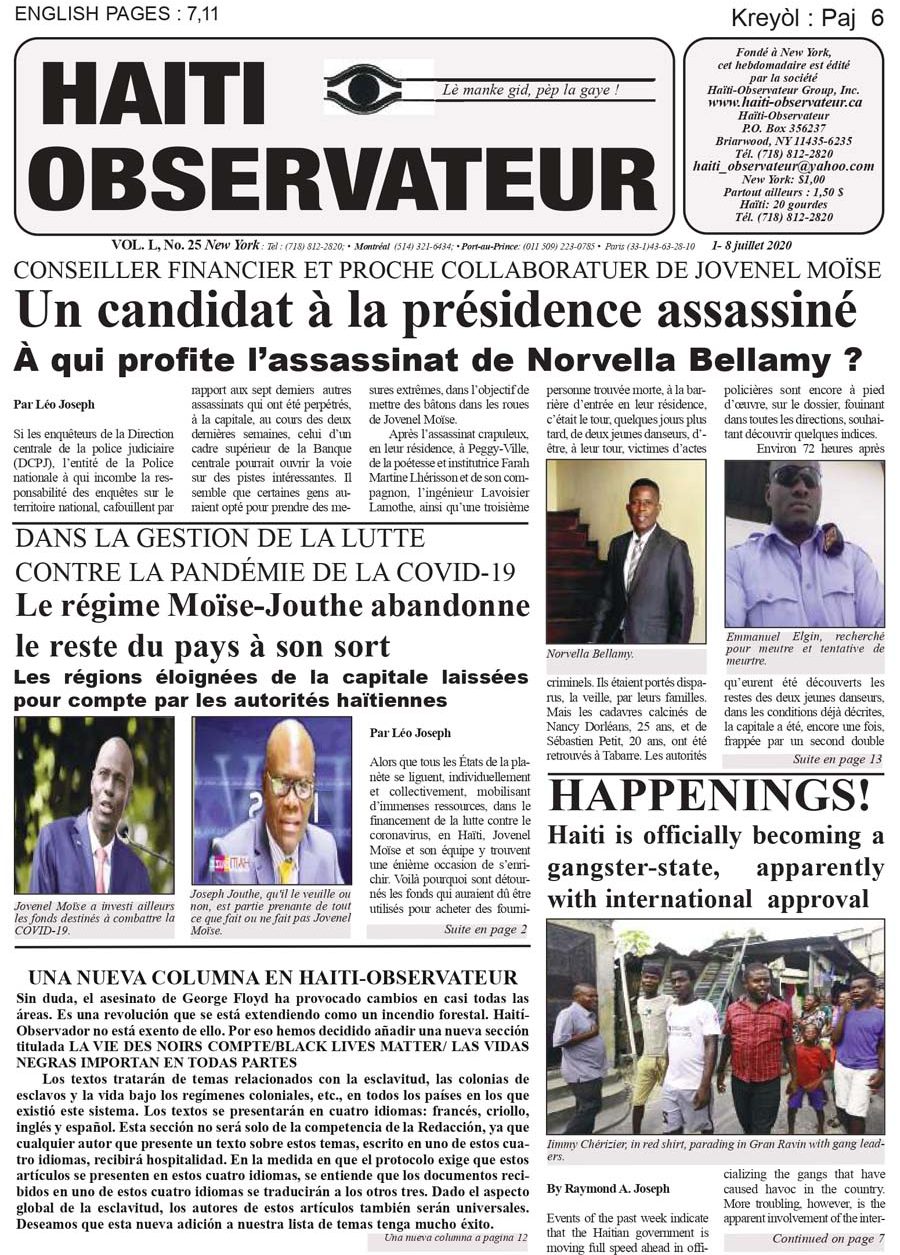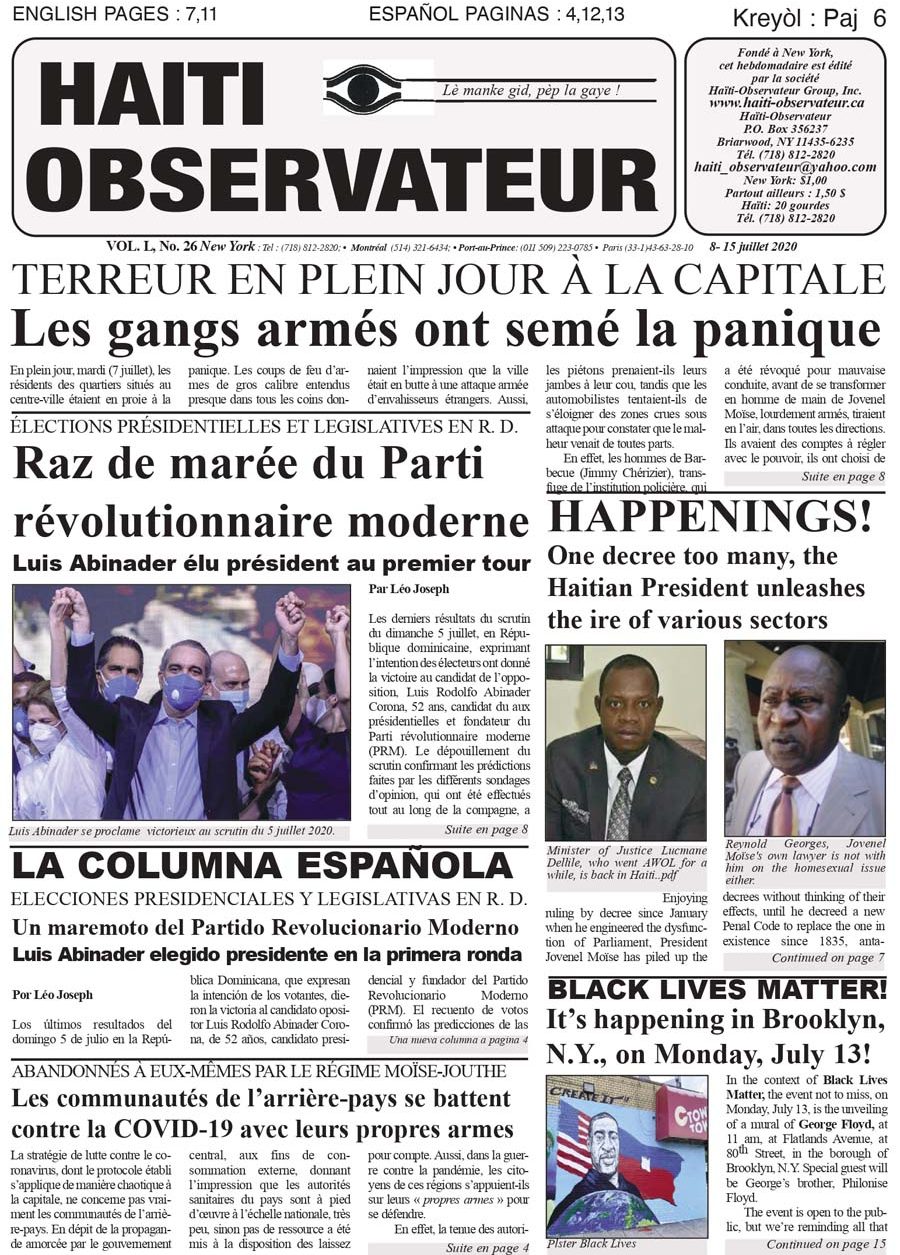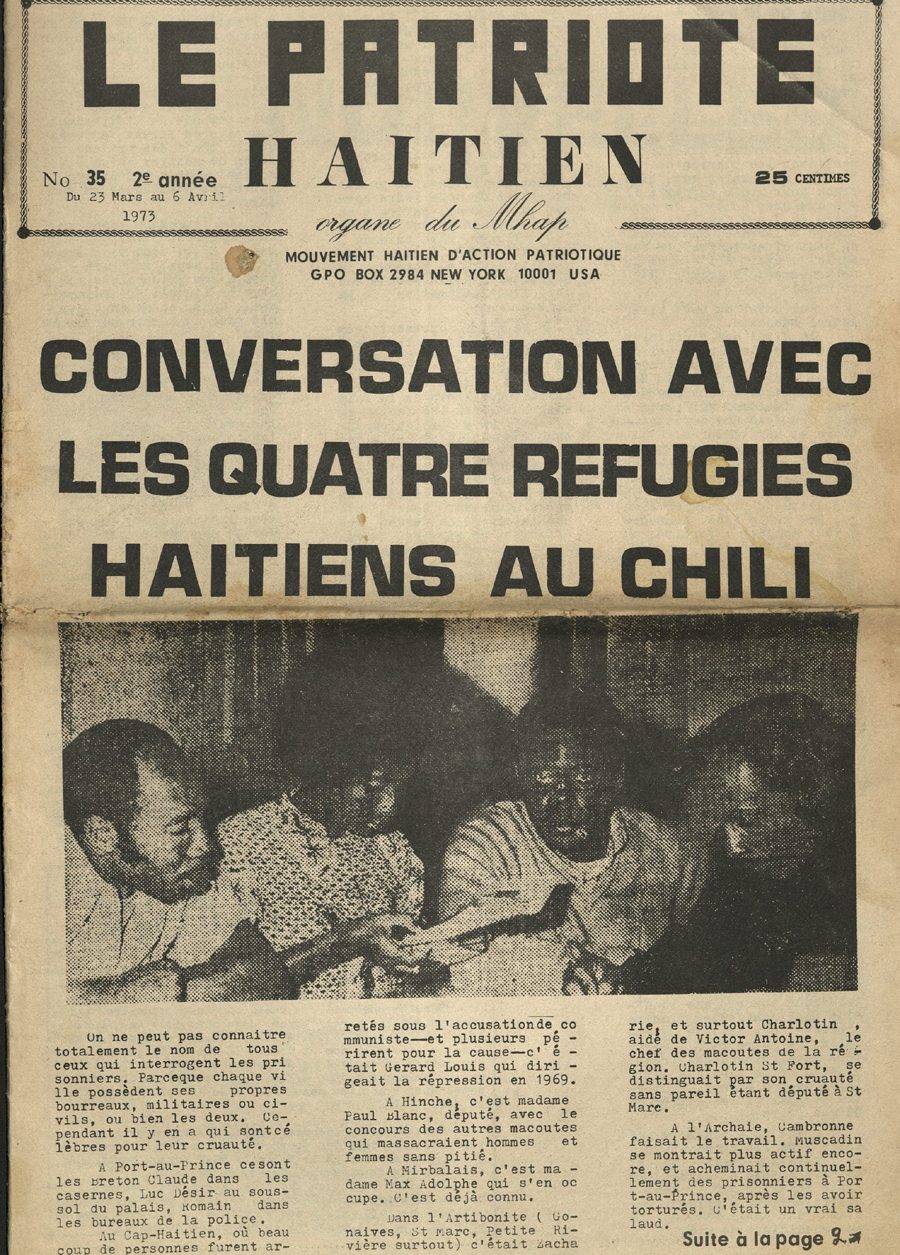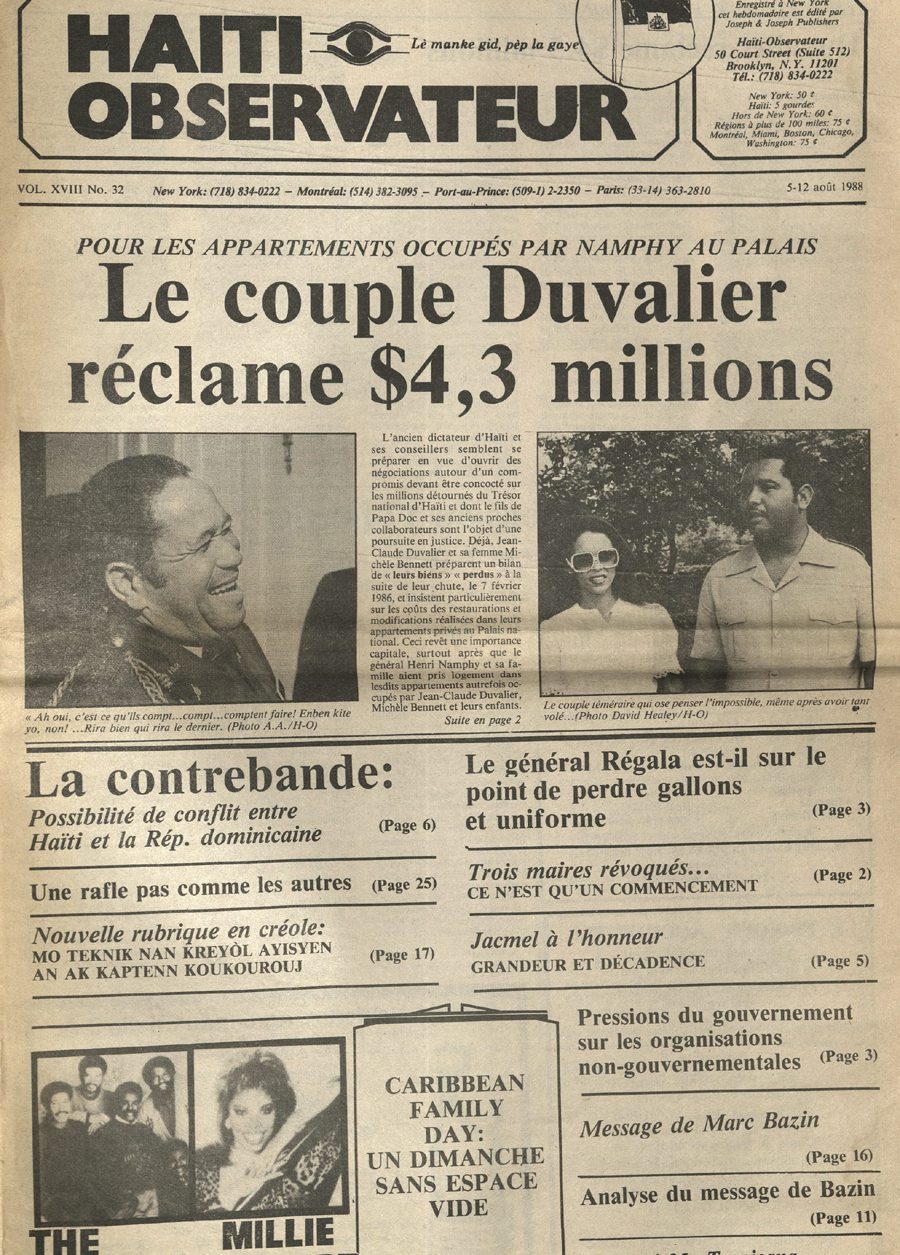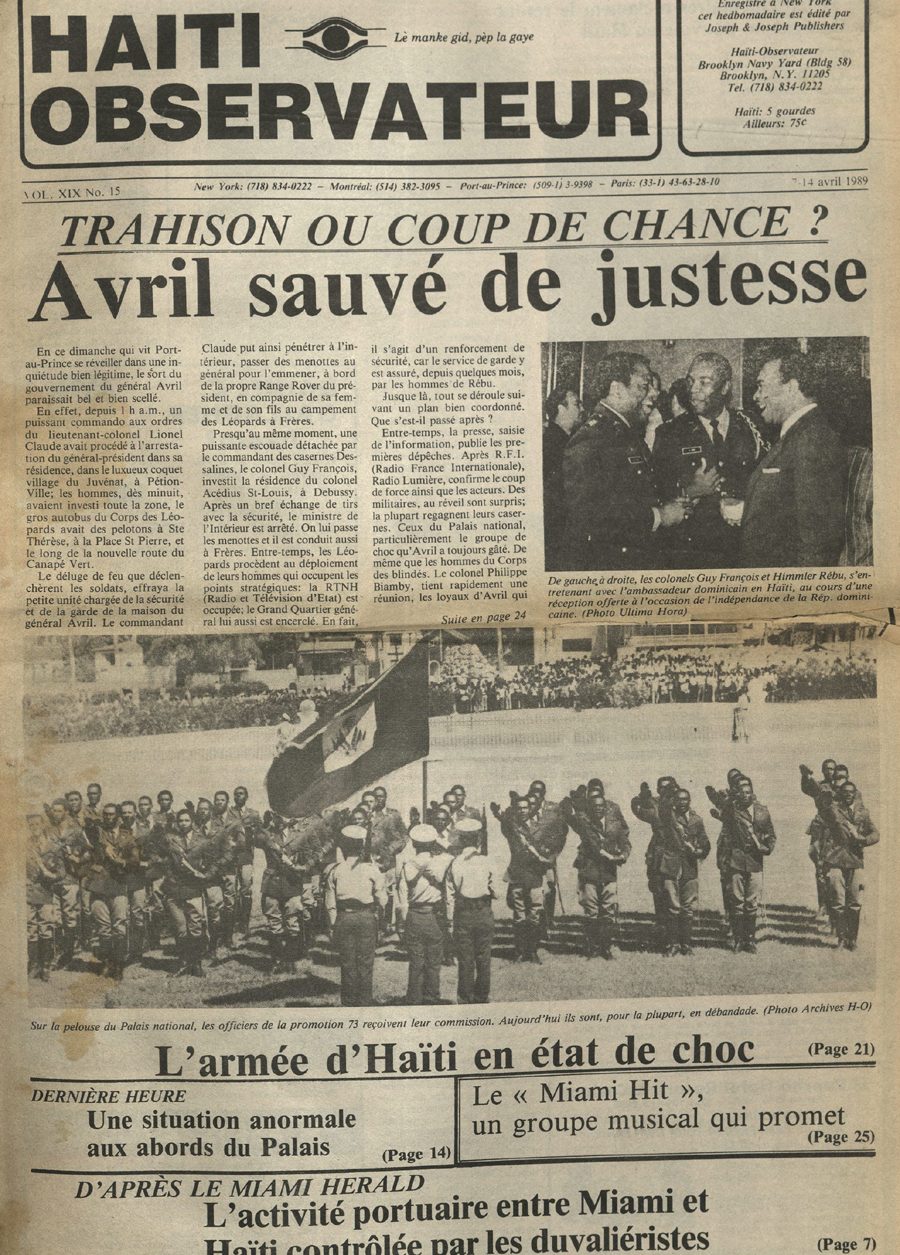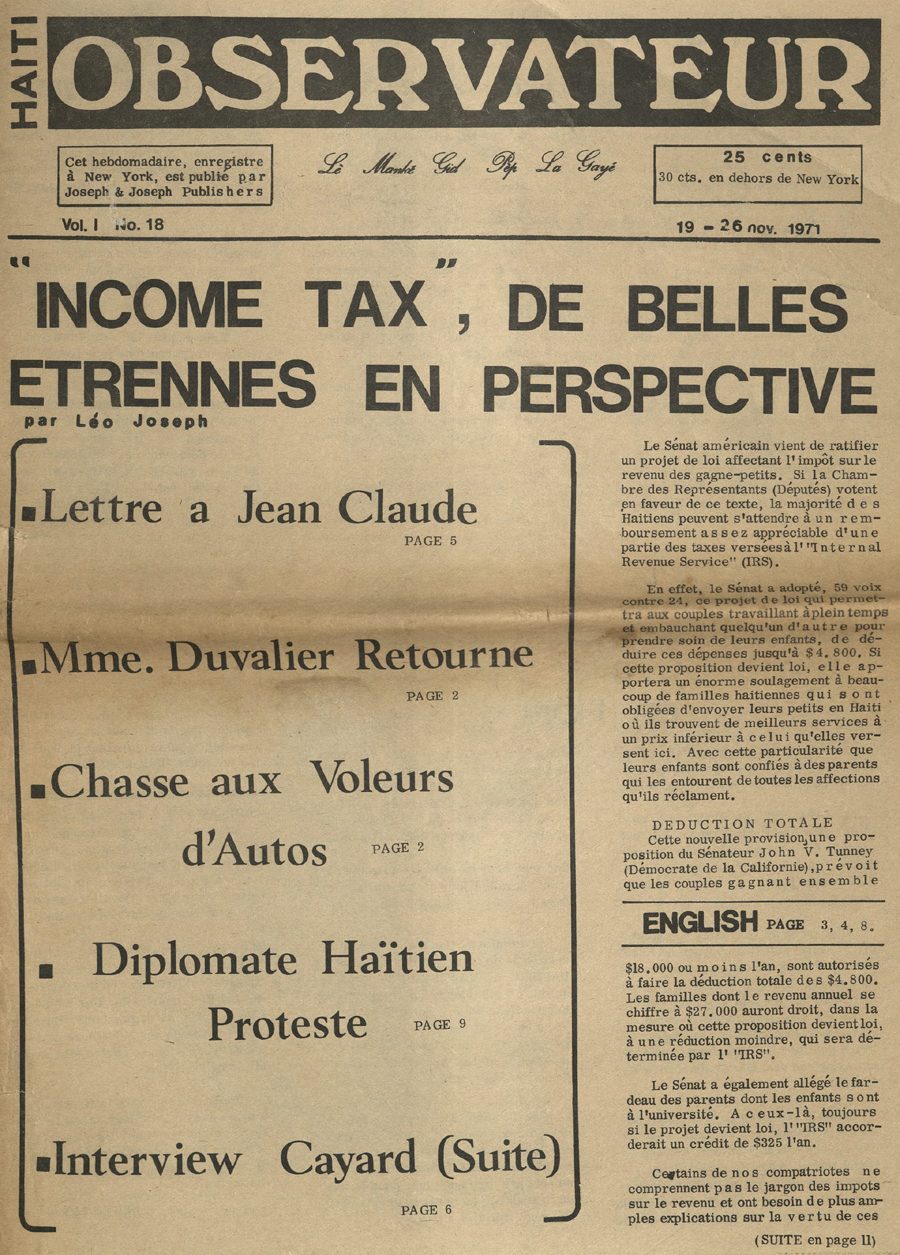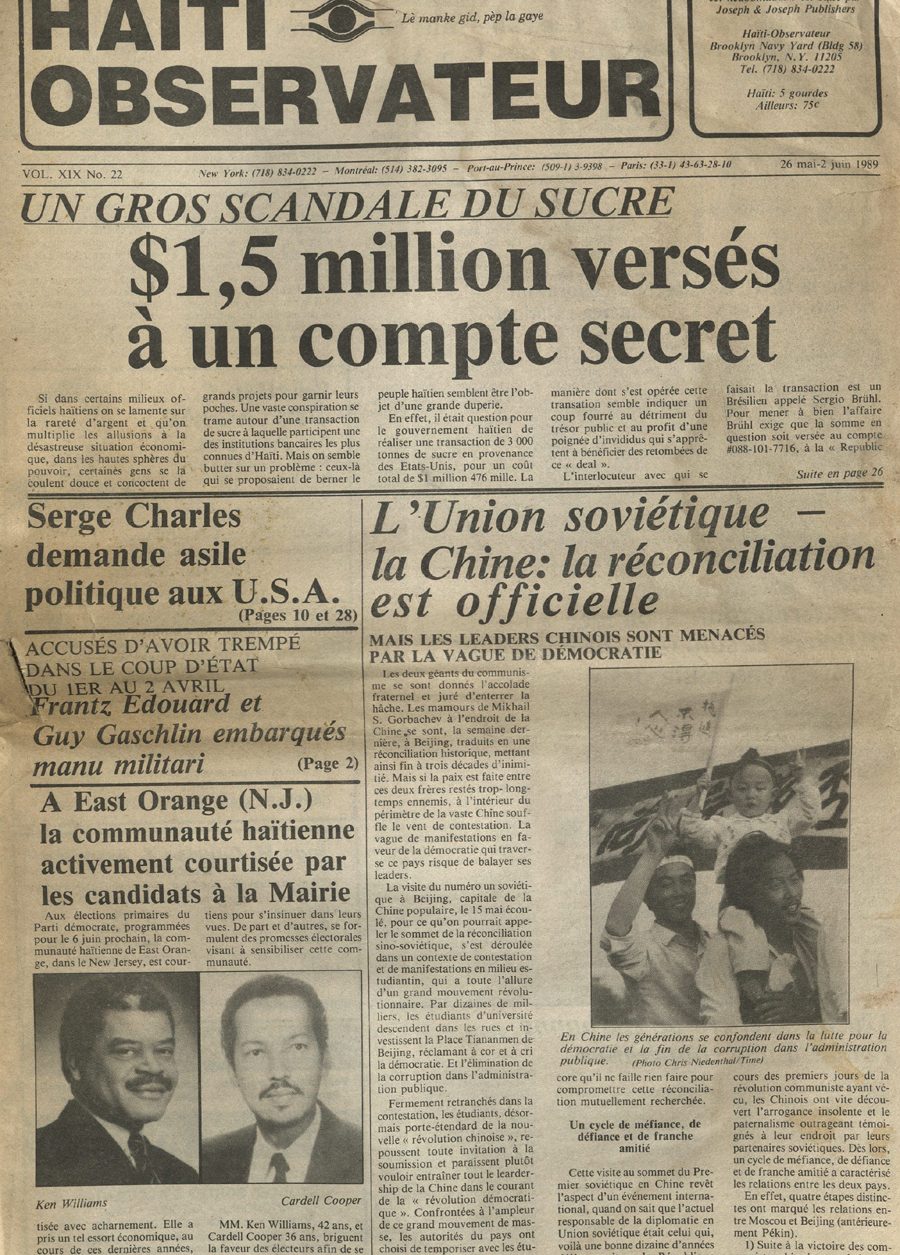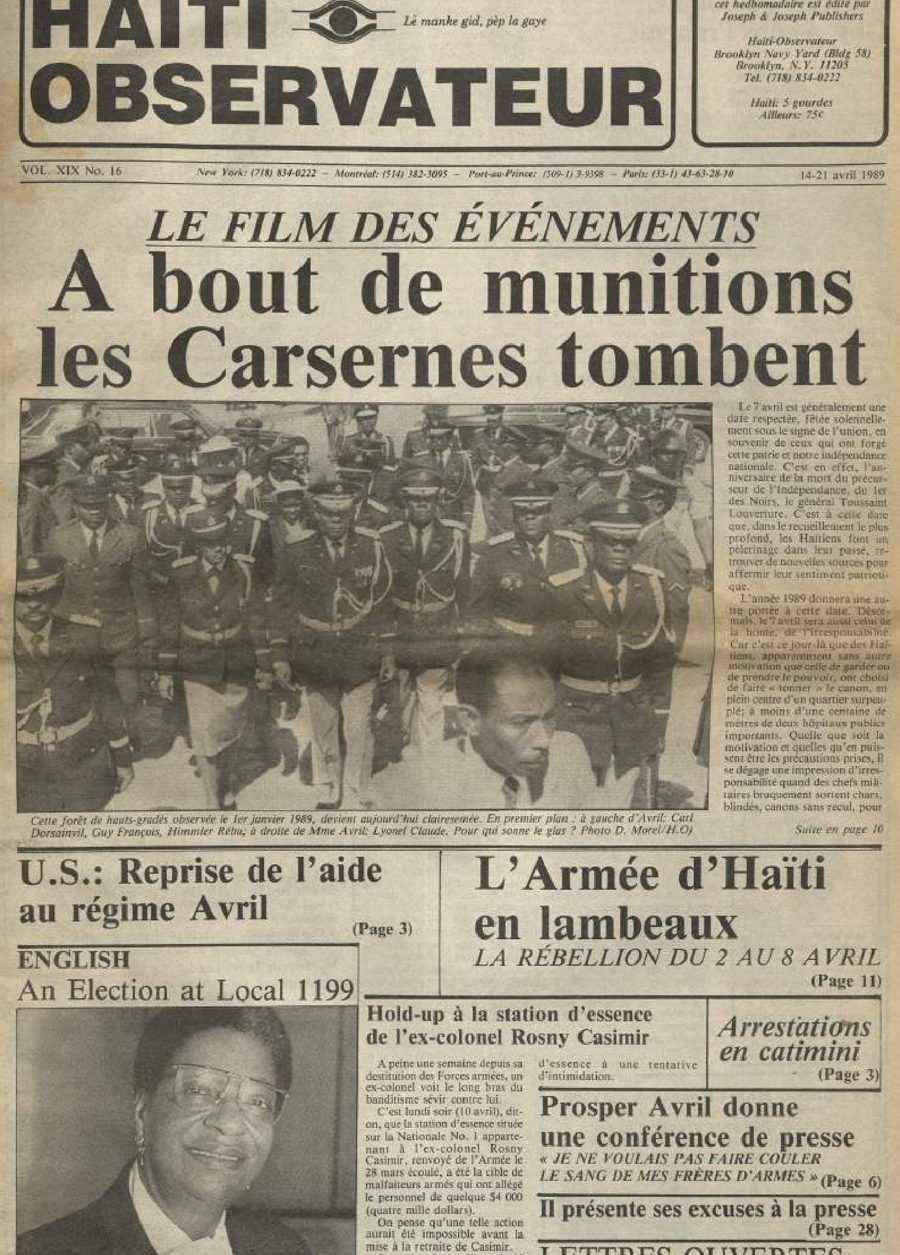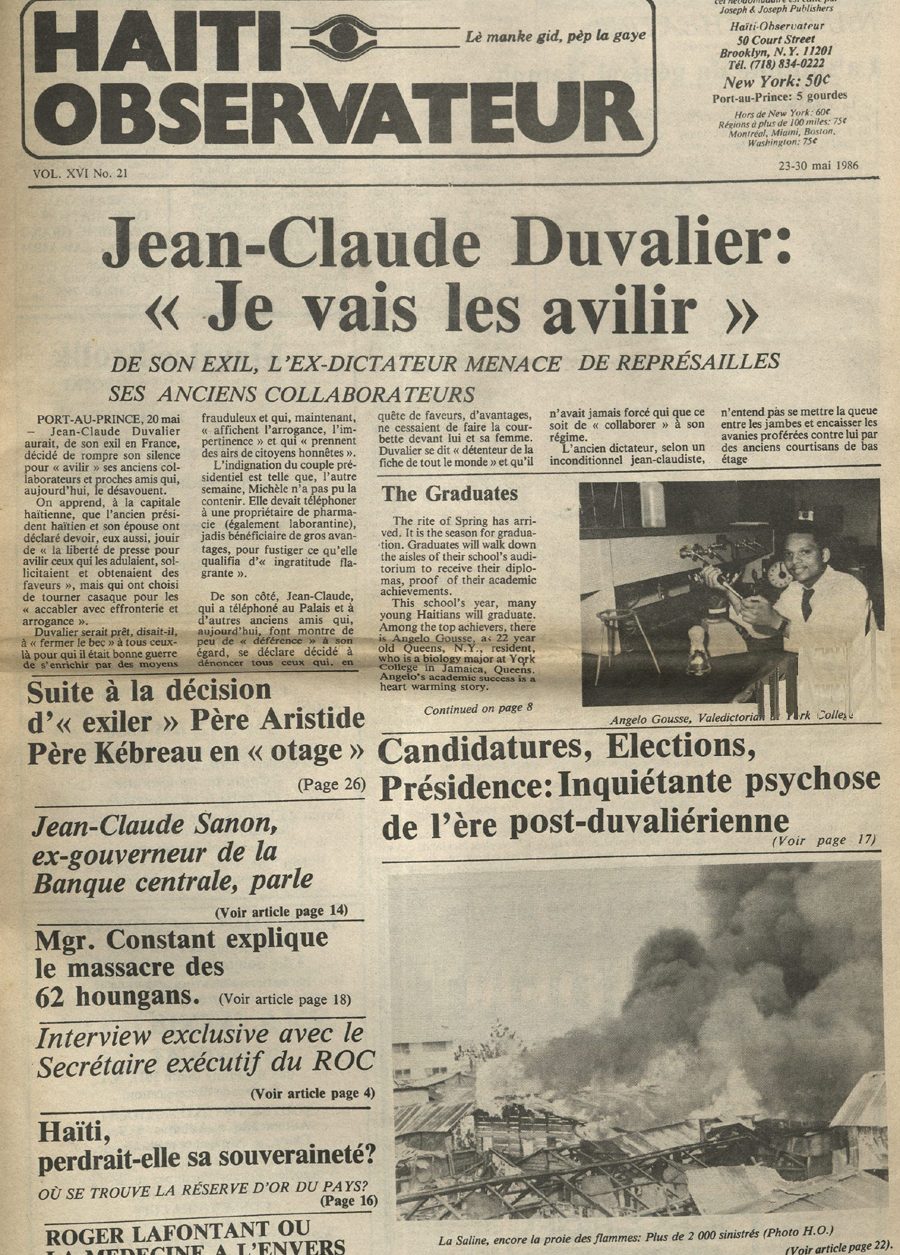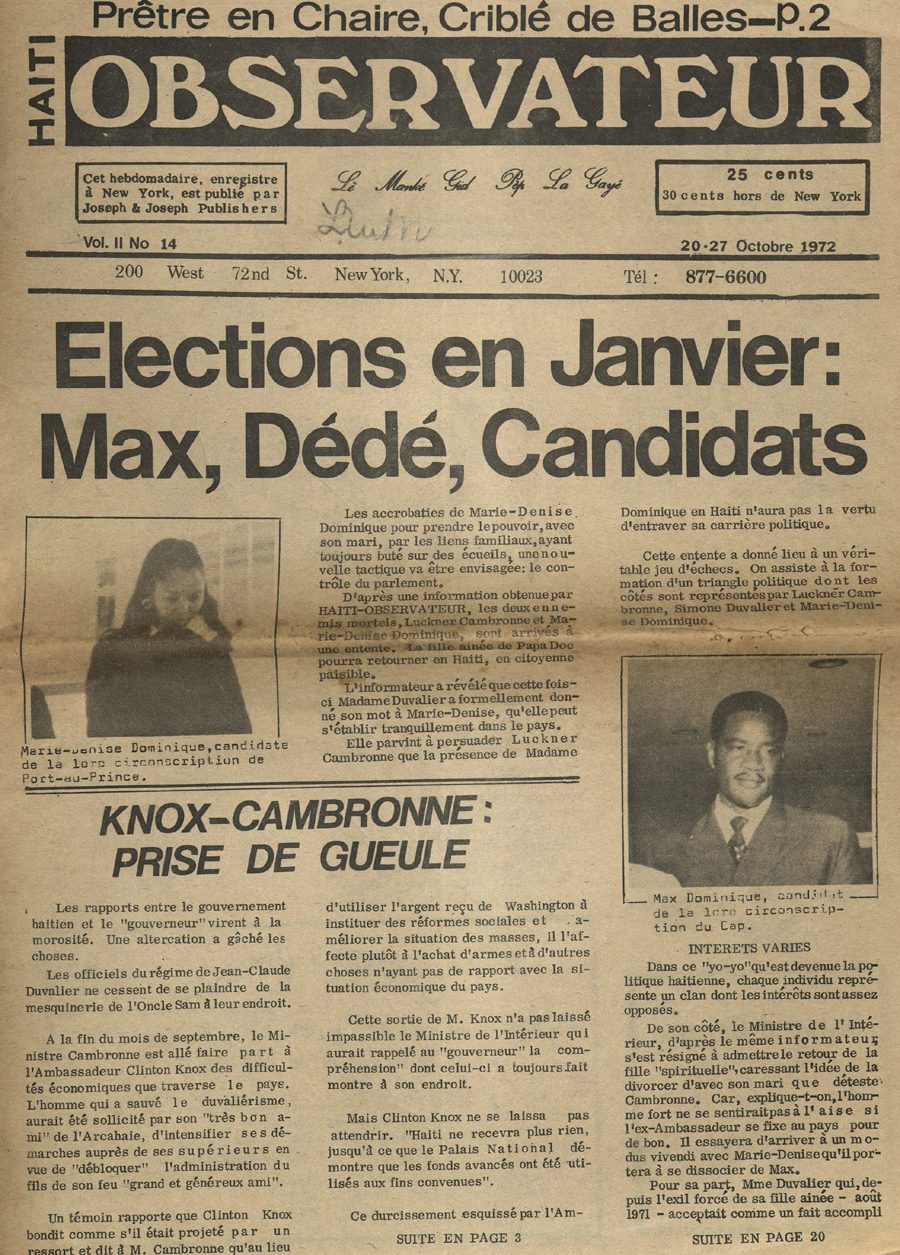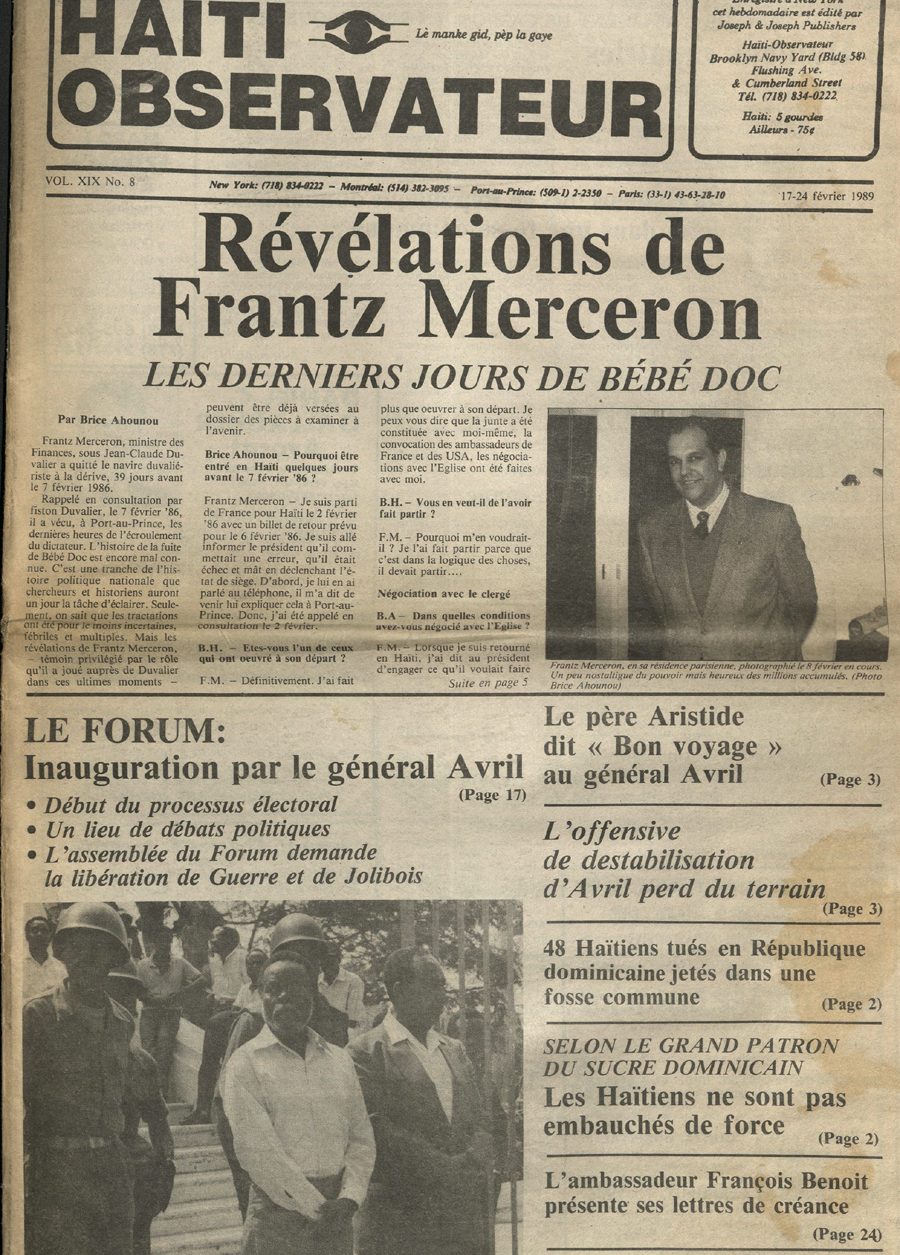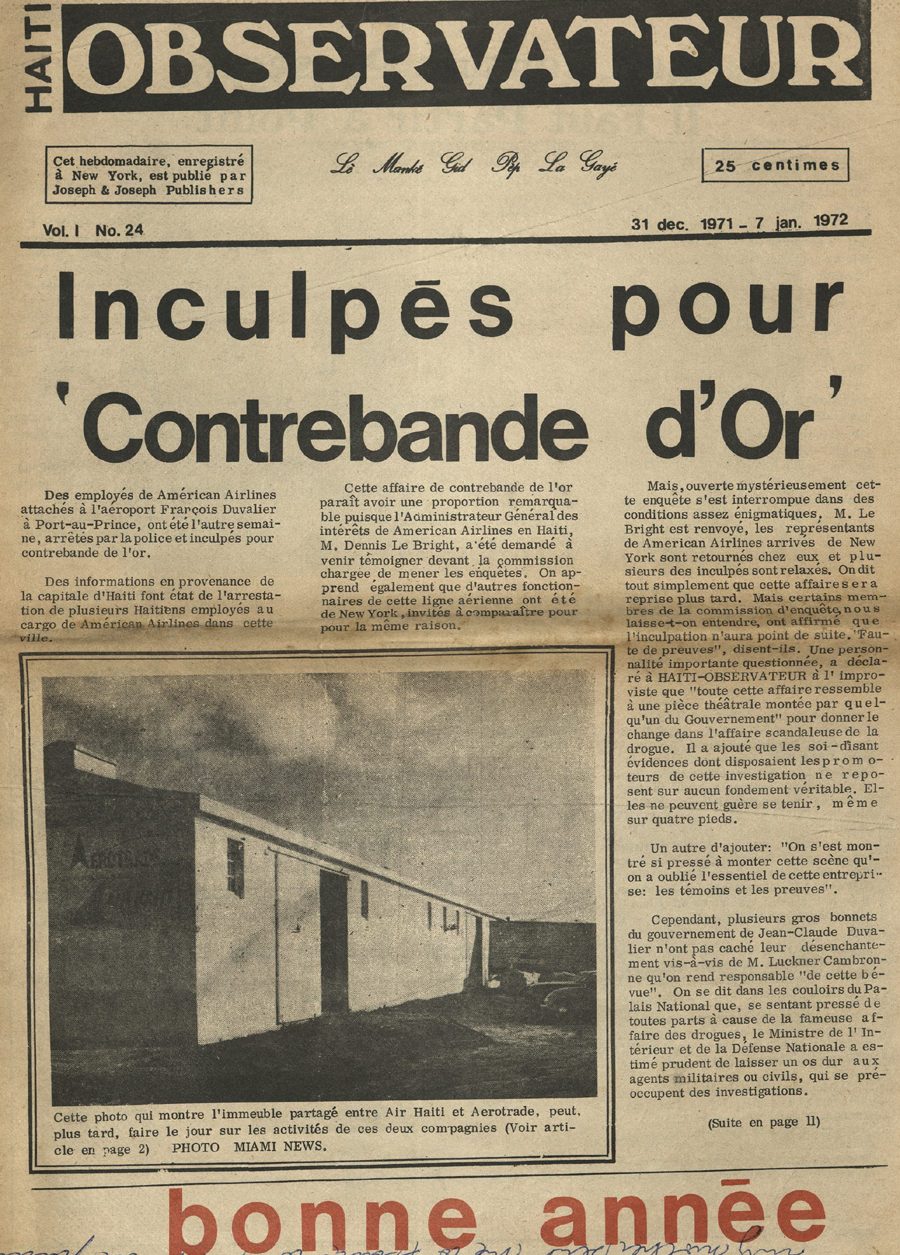
IN MEMORIAM
- Dr. Fritz Daguillard Special by Haïti-Observateur
Fritz Daguillard, a physician born in Cayes, Haiti, someone who, from the 1980s onwards, made significant contributions to the recognition of Haitian history and culture in the United States, died November 30 in Bethesda, Maryland. He was 85.
Dr. Daguillard’s family told the Haiti-Observateur the cause of death was complications from COVID-19.
His passing brought condolences from many who remembered him as a medical professional and historian, as well as an esteemed member of the Washington metropolitan area’s Haitian community. Dr. Daguillard’s annual July Fourth dinner parties prompted especially fond remembrances from some.
“My mother, Fritz’s childhood neighbor in Les Cayes, Dr. Marie M.B. Racine, made sure that our family reserved that entire day so that we could partake in the most joyous, inspiring, day filled with friends from Haiti and all over the world,” said District of Columbia Attorney General Karl Racine. “The day was marked with Fritz’s spectacular charisma, curiosity, and kindness.”
Dr. Daguillard, an immunologist by training, also enjoyed international recognition as an art collector who specialized in depictions of Blacks by European artists. Parts of his collection were featured in exhibitions at museums in New York City and New Orleans, among many others.
The collection also formed the basis for several exhibits on Haitian culture and history, held at various locations, including Port-au-Prince and Washington, D.C., between 1999 and 2003.
“Fritz Daguillard was a major collector with whom I was honored to work with on an important exhibit on Haitian independence at Maison de la Culture Notre-Dame de Grâce, in Montreal in 2003,” said Frantz Voltaire, head the CIDIHCA Haitian Canadian Research Institute. “His passing is a significant loss for the Haitian community of researchers and art experts.” Dr. Daguillard acquired much of his collection while living in Paris in the late 1970s and early 1980s, though he continued purchasing art works after 1983 when he moved to the Washington metropolitan area. On occasion, he would commission art works from renowned artists. One of his favorite pieces was a striking blue and red portrait of Dr. Martin Luther King, Jr., which he requested in the late 1980s from Polish poster artist Waldemar Świerzy.
Dr. Daguillard’s collection also included portraits of other Black figures, such as Jazz legend John Coltrane, former U.S. Secretary of State Condoleezza Rice, or General Thomas-Alexandre Dumas, father of the “Three Musketeers” author, all depicted by European artists.
Dr. Daguillard was born June 1, 1935 to a family active in business in Les Cayes, the capital of Sourthern Haiti. He was a maternal great-nephew of the famed Haitian poet Etzer Vilaire, whose kinship was a source of special pride to him. In the early 1990s, he met Martinican poet Aimé Césaire, who he said became emotional upon making the acquaintance of a relative of the Haitian man of letters.
After studying medicine at the University of Haiti, Dr. Daguillard emigrated, in the early 1960s to the United States. He did his residency at the Albert Einstein Medical Center in Philadelphia. He received a master’s degree in public health from Harvard University and, in 1969, a PhD. in medicine from McGill University in Montreal. He married the former Rita Senna in 1967. Dr. Daguillard moved to Québec city in the early 1970s to create and chair one of the first departments of immunology in North America, at Laval University Medical Center. He chaired the seventh International Leukocyte Culture Conference at Laval in 1972 and was appointed to the Medical Research Council of Canada two years later.
“Fritz Daguillard was one of the pioneers of modern immunology” said Dr. Jacques Boncy, director of Haiti’s National Public Health Laboratory, a longtime friend and colleague. “His research efforts on in vitro immunological response to antigens, as well as on rare cases of inherited immunodeficiency syndromes rank as memorable contributions to the field.” In 1976, Dr. Daguillard moved to Paris, where he continued his research on immunodeficiency with leading names in the field like Dr. Georges Mathé and Dr. Claude Gris celli. Living in Paris for seven years was also a boon to his hobby. That gave him an opportunity to significantly expand his art collection, which he had begun compiling as a young medical student in the 1960s. Dr. Daguillard approached art collection patiently, taking time to establish and nurture relationships with art dealers. By the 1980s, he had such a reputation in Parisian art world that art merchants, and sometimes artists, would drop by for a visit.
He enjoyed telling the story of how he received, as a present, a sketch of civil rights icon Angela Davis from French painter and sculptor Jean Messagier (1920-1999). Upon arriving at Dr. Daguillard’s Parisian apartment building, Messagier, bohemian and somewhat shabbily dressed, found himself being tailed by a suspicious building manager, who had no idea the artist was a personal friend of then French President François Mitterrand.
Dr. Daguillard’s immunodeficiency expertise prompted his transition to AIDS research, as well as his moving to Washington in the early 1980s. In 1985, The District of Columbia’s Public Health Commission invited him to take over the city’s AIDS Evaluation Clinic, a position he held until his retirement in 1998.
After 1999, Dr. Daguillard narrowed his focus down to Haitian history. Louis Harold Joseph, a former Haitian Ambassador in Washington, praised Dr. Daguillard as a significant contributor to the Embassy of Haiti’s “Culture Fridays” series, held from 1997 to 2003. During those years, Dr. Daguillard’s collection served as the basis for three art exhibits: On Senator Charles Sumner (1811-1874) and the diplomatic recognition of Haiti by the United States; a bicentennial celebration of the Haitian Revolution; and the “Enigmatic in his Glory,” centered on the still unresolved question of the likeness of Toussaint Louverture. The exhibits were held in Washington D.C.; Nassau, Bahamas; and Port-au-Prince.
Dr. Daguillard later served on the committee for the celebration of the bicentennial of Haitian independence chaired by the late President Leslie Manigat (1930-2014). Between 1999 and 2004, he traveled to Haiti up to four times a year, speaking to packed lecture halls on a variety of topics related to Toussaint Louverture and the Haitian Revolution. His medical background, for instance, came in handy at a conference on the causes of the illness and death of Toussaint Louverture.
After serving on the bicentennial commission, he kept contributing to exhibits, lending art works in his collection to several American museums, such as the Historic New Or leans or the New York historical Society. On occasion, when on travel, he would either be given private tours of collections, or be asked to brief museum staffs on his areas of expertise, as happened in St. Petersburg, Florida, or in Houston, Texas.
Until the end of his life, Dr. Daguillard maintained his lifelong personal connection with France. In 2002, he witnessed the transfer of novelist Alexandre Dumas’ remains to the Pantheon, France’s national hall of heroes, as a guest of the country’s government.
Five years later, he was back in Paris to witness the installation of his friend, novelist Dominique Fernandez, at the Académie Française. He and Mr. Fernandez had conducted a joint lecture tour of Haiti a few years earlier.
Not long before his passing, Dr. Daguillard was asked about his work on Haiti’s bicentennial. He agreed those years probably ranked among the most satisfying in his life. A humble an affable person, he just said: “I had the opportunity to make a small contribution to historical research in my homeland.”
It was a blessing knowing him and appreciating his dedication to art and his kindness to friends and all. The staff and editors of the Haiti-Observateur reiterate their sympathy to his survivors, who include his wife Rita, his son Robert and wife, as well as two grandchildren.
A Memorial gathering will be held in Summer of 2021.
- RAJ In collaboration 23 December 2020
Cet article est publié par l’hebdomadaire Haïti-Observateur (New York) VOL. L No. 50, édition du 23 décembre 2020, et se trouve en P. 15 à : http://haiti-observateur.info/wp-content/uploads/2020/12/H-O-23december-2020.pdf


